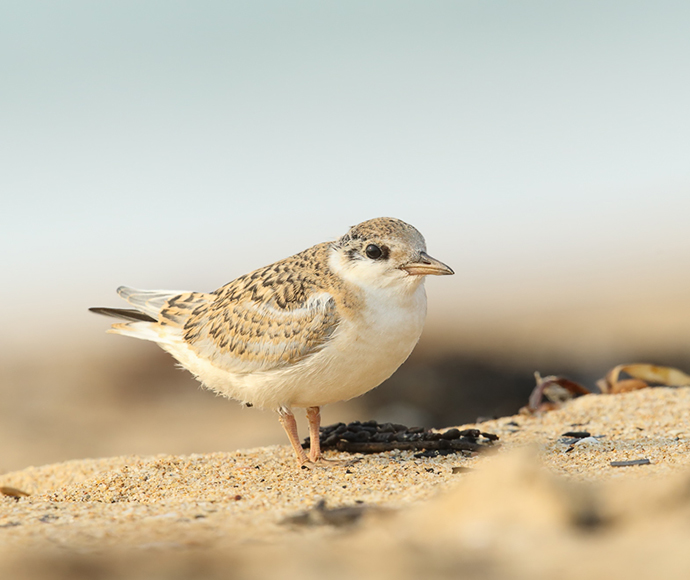Critically endangered Little Terns, Hooded Plovers and Pied Oystercatchers have fledged chicks at nesting sites along the NSW South Coast despite bushfires and beach visitors.

Environment Minister Matt Kean was pleased the little nesting shorebirds are doing well despite many challenges this summer including the Currowan fire.
“It’s really encouraging to see great conservation outcomes for these rare birds,” Mr Kean said.
“It’s great to have positive news about these birds which are migratory and listed as endangered or vulnerable species at risk of predation, storms and other threats.”
“These precious birds made it through last week’s king tide which nearly washed the eggs away before they hatched. Thankfully, NSW Government’s Saving our Species (SoS) program experts and local volunteers snatched them to safety from the advancing tide, moving the nests to the top of a sand mound.”
Volunteers kept watch to ensure the chicks were safe as the youngsters are still feeding with their parents at the site. Other breeding successes include:
- 35 little terns at Mogareeka, near Tathra
- 10 little terns and three pied oyster catchers at Tuross estuary, despite fox attacks and high tides
- 5 pied oyster catcher fledglings near Durras Lake entrance.
Shorebird Recovery Coordinator Sophie Hall-Aspland said these results show the shorebirds’ resilience, with the help of the determined efforts of the SoS’s South Coast Shorebird Recovery Program, which is a collaboration between SoS, NPWS, local community groups and over 100 volunteers.
The shorebird nesting season occurs from August to January/February, with peak laying from late November to mid-December. While pied oystercatchers are residents on many Aussie beaches, little terns undertake an arduous migration from as far away as Korea and Vietnam.







